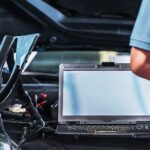Automotive Connectors Meet New Challenges as Vehicle Technologies Improve
Connectors used in automotive applications enable everything from stereo systems to drivetrains. As these systems become more connected, more automated, and more energy-efficient, they require connectors that can deliver high-speed connectivity in rugged, lightweight, and easy-to-install designs.
Harsh-environment connectivity has extended to various mobility applications including passenger and racing vehicles. This brings a host of infotainment, safety, navigation, and connectivity enhancements to the transportation experience.

(Image by Intel Free Press per CC BY-SA 2.0)
The passenger entertainment options this connectivity enables make the days of playing license-plate-spotting games on road trips a thing of the past. Now, passengers can use in-car Wi-Fi or cellular connectivity to stream videos on personal devices, or use integrated infotainment systems while the driver listens to satellite radio. Meanwhile, vehicle safety systems, including advanced driver-assist systems (ADAS) like automatic braking, have become more responsive than ever, collecting data about driving conditions, other vehicles, and infrastructure from an array of sensors and antennas, and processing this data at high speeds to make instant operational decisions. As these systems tap into smart city installations, they provide the rich information needed for partial and fully autonomous vehicle operation.
This next-generation connectivity in automotive applications requires exponentially more bandwidth than ever before. Two of the communications standards automotive applications currently rely on to transmit audio, video, voice, and data signals are the Media-Oriented Systems Transport (MOST) and Ethernet protocols. Although Ethernet allows for higher speed transmission, standard RJ45 plugs were developed for more traditional, in-office Ethernet applications and, as such, aren’t designed to resist vibration, which can cause the thin layers of gold plating to rub off the contacts and result in equipment failures. For this reason, many connector manufacturers have adapted standard Ethernet connectors to meet the requirements of harsher environmental conditions and now offer electrically and mechanically ruggedized Cat 5 and Cat 6 solutions that provide high-reliability, high-speed transmission in addition to effective protection against hazards including liquid and particulate ingress, electromagnetic and radio frequency interference (EMI/RFI), extreme temperatures, shock, and vibration.
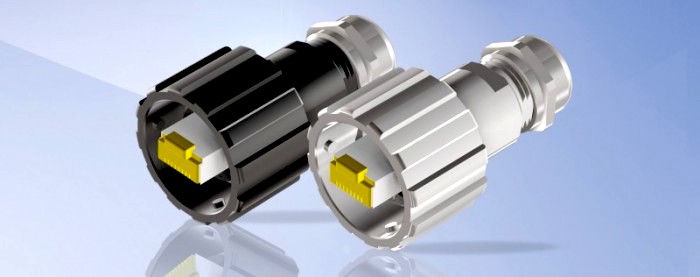
Conec’s IP67 RJ45 field-attachable connectors don’t require any tools for mating and have a bayonet latching mechanism for added security in harsh-environment applications, including automation technology, GPS navigation, and agricultural and construction machinery, as well as support for 10Gb/s data transmission.
Passenger safety features are no longer an exclusive technology just for luxury models. Today, they are more and more common, all the way down to compact and subcompact vehicles. All mobility applications rely on dependability. As the need for high-performance vehicles increases, the number of built-in components simultaneously increases. The result is limited mounting and wiring space, which is pushing connector manufactures to develop smaller and smaller connectors.
External vehicle applications include indicator lights (e.g., blind spot warnings) and actuator motor functions (e.g., power fold side-view mirrors) and are constantly subjected to harsh environments. One frequent hazard for external automotive applications is water exposure from both weather and car washing. In fact, the global car wash service market size was estimated at $34.19 billion in 2019, according to Grandview Research. With most people washing their cars every three to four weeks in a tunnel or roll-over type carwash, the connectors in cars need to stand up to water, soap, vibration, and abrasion from the “touchless” rags and brushes used.
One example of a compact waterproof connector that meets the USCAR-2 standard for automotive applications is JAE’s MX80 Series. The MX80 Series has a terminal position assurance (TPA) mechanism that allows assemblers to easily detect an incomplete terminal insertion and provides audible and tactile confirmation of correct insertion.
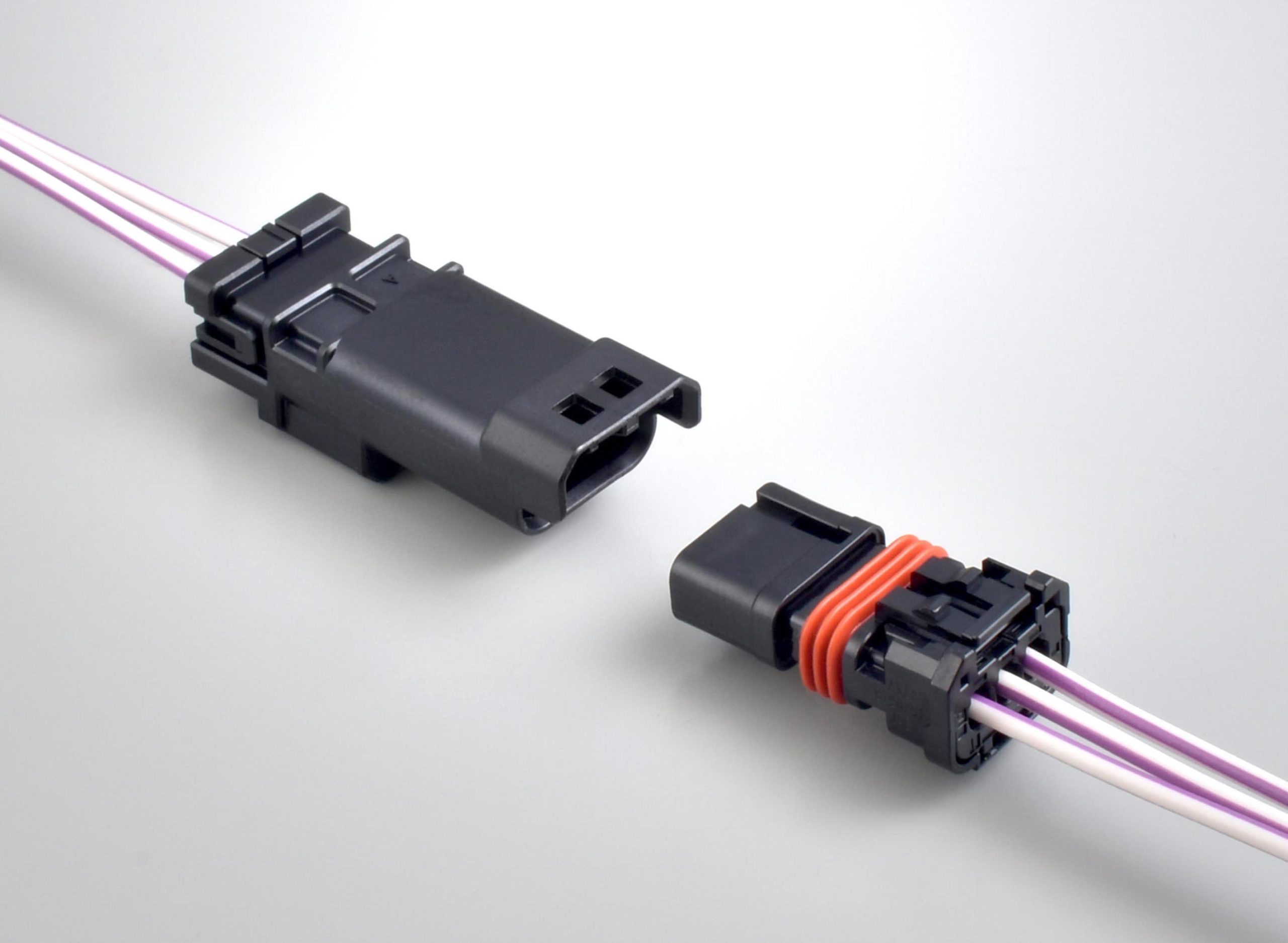
JAE’s MX80 series helps installers ensure a secure lock with audible and tactile feedback.
The ADAS market is also on the rise. According to Allied Market Research, the CAGR from 2019 to 2026 is expected to be 21.4%. There is not only a demand from consumers for safety features, but many countries have enacted laws and regulations requiring vehicle manufacturers to install safety features.
According to the U.S. Department of Transportation (DOT), 36,560 people were killed in car crashes in 2018. The Consolidated Appropriations Act of 2018 (2018 Omnibus Bill) directs the DOT to conduct research on the development of automated vehicles and provides necessary funding. Because most roadway crashes occur due to human error, automated technology in the vehicle has the potential to save thousands of lives. These technologies include forward collision prevention, backup and parking cameras and alert systems, lane and side assist detection, and adaptive cruise control.
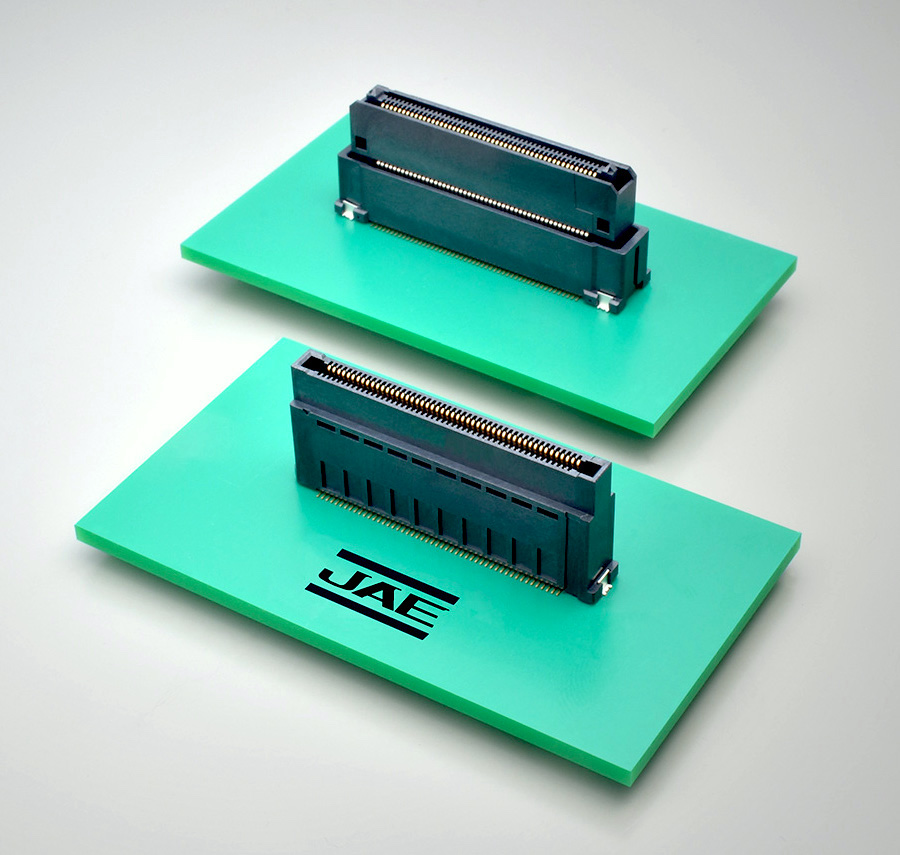
JAE’s AX01 Series floating BTB connectors support 8+Gb/s high-speed data in automotive applications including navigation systems, audio modules, and wireless modules. They allow for ±0.5mm of tolerance in the X-, Y-, and Z-axis directions, incorporate keying and mating guides and high-reliability, vibration-resistant contacts, and are rated for 0.5A, 50VAC, and 100 mating cycles.
When designing a LiDAR (light detection and ranging) system, it helps to have a floating style board-to-board connector that offers high speed transmission with reliable performance. The advantage of a floating design is that it absorbs misalignment on the board, which is ideal for robotic assembly and reduces stress on the mounting portion of the connector. JAE’s AX01 series is an example of a connector design that includes float mounting and high-speed transmission exceeding 8Gb/s.
It’s also worth noting that the automotive market isn’t exclusively limited to passenger cars. Manufacturers in the auto racing industry are actively reimagining their cars with a lower carbon footprint and improving safety performance as well. GreenGt, for instance, is designing and developing high-performance, clean, and durable electric-hydrogen propulsion systems for race cars. These systems significantly improve driver safety and reliability because hydrogen is less flammable than gas and electric motors have five times fewer parts, and thus potential points of failure, than internal combustion engines. The latest generation of electronic controls and telemetry systems also ensure optimal on-track performance. To cap it all off, GreenGt’s high-performance, electric-hydrogen automotive technology uses renewable energy and produces no pollutants or emissions of gas, CO2, or NOx. To race, cars must comply with Fédération Internationale de l’Automobile rules and safety standards and be fast, lightweight, and 100% reliable. To meet those needs, GreenGt needed a connector that had both high-voltage and harsh-amperage contacts, provided proven resistance to shock and vibration, and was quick and easy to connect and disconnect.
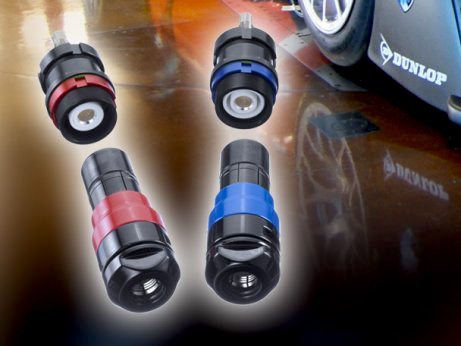
Fischer Connectors’ Fischer UltiMate Series connectors have a ruggedized aluminum form factor that’s much lighter than comparable brass connectors and were successfully used in the GreenGT H2 racing vehicle — the industry’s first prototype electric/hydrogen competition car.
As increased connectivity demands continue to proliferate across markets and applications and into ever harsher environments, many connector manufactures are expanding their ruggedized product portfolios. However, no one manufacturer makes a product ideally suited to each and every one of the many new harsh-environment application requirements. As such, design engineers developing electronic products for an array of harsh-environment applications areas are wise to leverage the services of distributors like Kensington Electronics, Inc., which carry many different product lines from the industry’s leading connectivity manufacturers, employ teams of engineers well versed in each of them, and have massive inventories readily available on the shelf.
For more information, visit Kensington Electronics online.
Like this article? Check out our other connected vehicles, harsh environment, and market update articles, our Automotive Market Pages, and our 2020 and 2019 Article Archives.
- Automotive Connectors Meet New Challenges as Vehicle Technologies Improve - September 22, 2020
- The Internet of Battlefield Things is Changing Connector Designs - September 17, 2019
